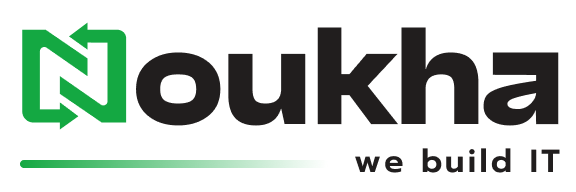The process of the successful launch of a software product demands speed and adaptation. The strategic advantage of agile approach in Minimum Viable Product (MVP) development is beneficial to startups and businesses in Canada. As specialists in the custom software development industry, at Noukha, we are able to blend the agile principles with the MVP development to assist companies in developing, testing, and developing their products effectively.
This post discusses how the Minimum viable product in agile methodology changes the MVP process- it lowers the levels of risk, improves teamwork, and shortens the time to market.
What Is a Minimum Viable Product in Agile?
The simplest, working version of a product created to fulfill fundamental user requirements and confirm market demand is called a Minimum Viable Product (MVP). The MVP is created in agile practices and created using sprints or cycles, which allows the inclusion of feedback continuously and the provision of modifications in response. 
Agile in contrast to the traditional linear ways encourages incremental development. A small but workable segment of the product is delivered with each sprint, thus fully compliant with the MVP objective of early validation. Such synergy contributes to the fact that the MVP approach is more adaptive and effectiveness-oriented.
Reasons MVP Development Should Be Agile
Continuous Improvement and Learning
Agile MVP development allows rapid development of a product by teams who can test and develop according to real user feedback. This minimises the wastage in unnecessary features and keeps on maximising the value proposition of the product.
Faster Delivery
Agile assists in releasing MVPs sooner- faster by cutting development into sprints that concentrate on the core features, thereby, capturing market opportunities at a faster rate.
Enhanced Collaboration
Agile promotes close coordination of developers, product owners, and stakeholders during the process assuring of similar priorities and open progress.
Better Risk Management
Through constant testing and modification, risks are eliminated at an early stage before high-scale failures and expensive reworking occur.
Customer-Centric Focus
In agile MVPs, the user feedback determines the decision-making process, and therefore the product is developed according to the real needs and not assumed needs.
The way Agile changes MVP development process
Developing the Problem and Vision
Agile teams begin with trying to grasp the problem they are trying to solve and getting into agreement on the minimum features required to be validated. This is the vision that informs the cyclical planning and implementation. 
Prioritizing Core Features
Agile teams put user value and technical feasibility at the forefront of their backlog of features using agile frameworks such as Scrum. The MVP contains only must-have elements, and there is no feature bloat.
Sprint-Based Development
Development proceeds in brief, time-limited sprints (typically 1-4 weeks) that provide functional slices of the MVP. The next cycle is also preceded by each sprint with a test, feedback, and course correction.
Continuous Feedback Loop
Incremental viewing of MVP by stakeholders and users after every sprint gives them feedback, which has a direct impact on further development.
Adaptive Planning
Agile embraces change. The requirements of the product are automatically developed on the basis of findings which enables the MVP to adjust to the market requirements as time goes by.
Agile MVP Development Pitfalls
Overbuild Early: Agile emphasizes features that are absolutely necessary and does not waste time with expensive over-engineering. 
Overlooking User Feedback: The feedback loop makes sure there is continued validation and a change accordingly.
Fixed, Inflexible Planning: Dynamic roadmaps allow teams to pivot when new information becomes available in Agile.
Late Reactions to changes in the market: Sprinting allows the company to react to the changes promptly or to the needs of the users.
Agile MVP Development in Canada by Noukha
Noukha focuses on custom software development with the best of agile practices to create MVPs in the Canadian startups and enterprises. Our approach includes:
- Extensive discovery and explanation of vision and user requirements.
- Sprint Agile planning and backlog prioritizing were product value oriented.
- Clear progress and frequent demos and involvement of stakeholders.
- Implementation on scalable cloud-native solutions to facilitate smooth scaling.
- Extensive QA/testing in each sprint to ensure quality.
Results-based process reduces time-to-market, Free-idea validation, and wins investor confidence without causing money wastage.
When to Scale Beyond the MVP
Scaling follows your MVP when it becomes evident that there is user engagement and product-market fit. Agile facilitates this change by providing the possibility to expand the features gradually, optimize the performance, and improve the infrastructure, all in line with the usage data in the real world.
Conclusion
MVP in the agile methodology transforms the way startups launch products. Agile MVP development reduces risks, maximizes learning, and value delivery by combining quick and iterative development with constant feedback.
As an authorised collaborator in the custom software creation, Noukha enables Canadian startups to make the most out of agile, by providing MVPs that form powerful bases of successful and scalable software products.
Are you prepared to revolutionize your product development process through agile-based MVPs? Book Noukha today.
FAQs
Q1. What is the distinction between a traditional MVP and an agile MVP?
MVPs that are developed in a traditional manner are typically developed in a linear fashion whereas agile MVPs are created in an iterative manner through continual feedback and flexibility.
Q2. On average, how many weeks is it expected to take to create an MVP with agile?
The time taken to attain initial launch, based on complexity, is between 6 and 12 weeks in most agile MVPs.
Q3. Is agile MVP cost reduction possible?
Yes, it is possible to optimize budgets with the help of agile as it is concentrated on key features, no reworks needed, and it can be verified faster.
Q4. What is the role of user feedback in agile MVP?
The prioritization of features and the refinement of products are informed by the constant feedback given by the user at the end of each sprint.
Q5. What is the value of using Noukha by Canadian startups to develop agile MVPs?
Noukha is a blend of local understanding, nimble skills and scalable custom software creation that will produce MVPs that would work in the Canadian market, and even more.



